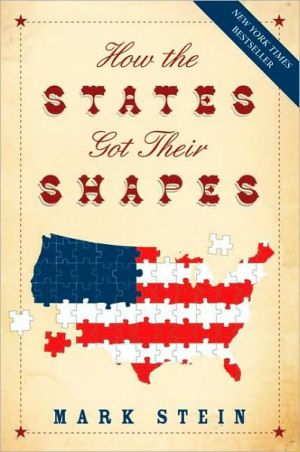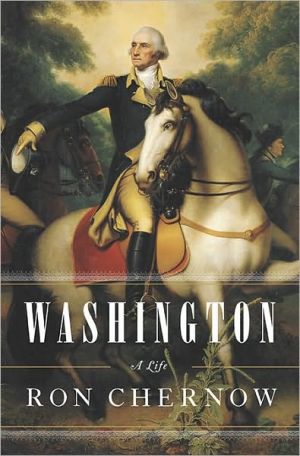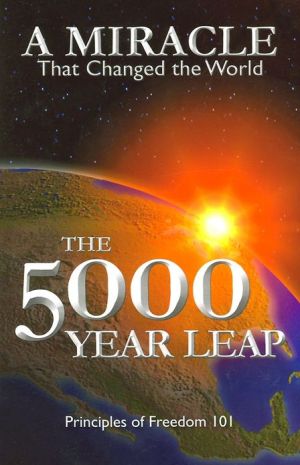How the States Got Their Shapes
Mark Stein is a playwright and screenwriter. His plays have been performed off-Broadway and at theaters throughout the country. His films include Housesitter, with Steve Martin and Goldie Hawn. He has taught at American University and Catholic University.
Search in google:
Mark Stein is a playwright and screenwriter. His plays have been performed off-Broadway and at theaters throughout the country. His films include Housesitter, with Steve Martin and Goldie Hawn. He has taught at American University and Catholic University. Publishers Weekly America's first century was defined by expansion and the negotiation of territories among areas colonized by the French and Spanish, or occupied by natives. The exact location of borders became paramount; playwright and screenwriter Stein amasses the story of each state's border, channeling them into a cohesive whole. Proceeding through the states alphabetically, Stein takes the innovative step of addressing each border-north, south, east, west-separately. Border stories shine a spotlight on many aspects of American history: the 49th parallel was chosen for the northern borders of Minnesota, North Dakota, and Montana because they ensured England's access to the Great Lakes, vital to their fur trade; in 1846, Washington D.C. residents south of the Potomac successfully petitioned to rejoin Virginia (called both "retrocession" and "a crime") in order to keep out free African-Americans. Aside from tales of violent conquest and political glad-handing, there's early, breathtaking tales of American politicos' favorite sport, gerrymandering (in 1864, Idaho judge Sidney Edgerton single-handedly "derailed" Idaho's proposed boundary, to Montana's benefit, with $2,000 in gold). American history enthusiasts should be captivated by this fun, informative text.Copyright © Reed Business Information, a division of Reed Elsevier Inc. All rights reserved.
How the States Got Their Shapes \ Chapter One\ Don't Skip This\ You'll Just Have to Come Back Later\ Many of our state borders are segments of borders that date from England's and, later, the United States' territorial acquisitions, and they can be identified by looking for lines that provide multistate borders.\ The French and Indian War Border\ The French and Indian War (1754-63) resulted in the oldest of these multistate boundaries. In this war, England and her American colonists began what became the dismantling of France's possessions in North America. With this victory, England added to her North American possessions all the land between the Ohio River and the Mississippi River. The boundaries of that war are still on the map today, for they provide borders for the states of Ohio, Indiana, Illinois, and Wisconsin. (Figure 4)\ The division of this land acquired in the French and Indian War influenced virtually every state border that followed. After the Revolution, Congress had to decide how best to divide this region, known as the Northwest Territory, into states. Congress assigned Thomas Jefferson the task of studying this matter and in 1784 Jefferson issued a report to Congress in which he proposed that the region be divided into states having two degrees of height and four degrees of width, wherever possible.\ As it turned out, Congress didn't employ these borders when it enacted the Northwest Ordinance in 1787, the law that included the boundary lines for the future states to be created from the Northwest Territory. Congress did, however, adopt its underlying principle: All states should becreated equal.\ The Louisiana Purchase Borders\ Probably the most notable American boundary is the long straight line that defines so much of the nation's northern border with Canada. This line is the 49th parallel. It first surfaced on the American map following the 1803 Louisiana Purchase. The document conveying France's remaining North American land—a tract that included all or some of Louisiana, Arkansas, Oklahoma, Missouri, Kansas, Iowa, Nebraska, South Dakota, Wyoming, Minnesota, Montana, and Colorado—states that the French Republic cedes to the United States "the Colony or Province of Louisiana with the same extent that it now has." This wording seems refreshingly brief and to the point for a legal document, if a bit vague. The vagueness is also the reason very little evidence of the Louisiana Purchase can be found in our state lines. Other than the boundaries provided by the Gulf of Mexico and the Mississippi River, no one knew what its boundaries were! Jefferson believed that all the land comprising the watershed leading to the Missouri and Mississippi rivers constituted the Louisiana Purchase. But, as he soon discovered, the United States' neighbors did not. In reality, France's American territory extended to the west as far as a Frenchman could go without getting shot by a Spaniard, and likewise to the north without getting shot by an Englishman. (Figure 5)\ The ambiguous borders of the Louisiana Purchase led England and the United States to negotiate where France's former lands ended and where British North America (Canada) began. Under the Convention of 1818, the two nations agreed upon the 49th parallel from the westernmost longitude of Lake of the Woods to the crest of the Rocky Mountains. (Figure 6)\ But the choice of the 49th parallel begs the question, why not 50? It's such a nice round number. The reason for the one-degree difference is that England needed to maintain her access to the Great Lakes via the westernmost of those lakes, Lake Superior. Such access was vital to England's fur trade in general and, in specific, to a major fur trading post located at the confluence of the Assiniboine and Red rivers—a place now known as Winnipeg. Had the border been located at the 50th parallel, Winnipeg would have been in American territory, as would the waterways that flow east to Lake Superior. (Figure 7)\ The Louisiana Purchase also sparked concern in Spain, which claimed much of the land west of the Rockies. This concern led to the Adams-Onis Treaty (1819). The entire eastern border of Texas—the straight line of what later became its panhandle, the eastward flowing Red River, the straight line southward at the lower corner of Texas, and the Sabine River arcing southward to the Gulf of Mexico—all dates back to this treaty. Also emanating from the Adams-Onis Treaty is the long, multistate line that runs along the 42nd parallel, which later became the northern border of California, Nevada, and northwest Utah. But, as with every man-made line, there is the question, why put the line there? (Figure 8)\ The Border Inherited from England and Spain\ The 42nd parallel already existed as a boundary before the 1803 Louisiana Purchase. In 1790, England and Spain had concluded a treaty known as the Nootka Convention.\ The Nootka Convention? Nootka Sound is a small inlet in Vancouver Island (off the west coast of what is now Canada). In the late 1700s, England and Spain nearly went to war over their conflicting ambitions along the west coast of North America. The British needed the rivers and inlets of Vancouver Island and northwestern Canada to carry on their fur trade. But the Spanish claimed the land was already theirs—as is reflected to this day by names along the west coast of Canada such as the Juan de Fuca Strait, Port San Juan, Estevan Point, Vargas Island, Valdes Island, and Gabriola.\ All of England's interests west of the Rockies would have been at risk had Spain succeeded in ousting England from Vancouver Island. In the Nootka Convention, England sought to protect its access to all those rivers and their tributaries vital to carrying out the fur trade. Key among those rivers was the Columbia River. And virtually all of the tributaries to the Columbia River are north of the 42nd parallel.\ Below the 42nd parallel, virtually all of the rivers wend their way to San Francisco Bay. Commerce along these waterways was reserved exclusively for Spain with the 42nd parallel as the border. For its era, it was a great parallel. And evidently it has remained an effective border, since it's still there, dividing five states: Oregon, Idaho, California, Nevada, and Utah. (Figure 9)\ How the States Got Their Shapes. Copyright © by Mark Stein. Reprinted by permission of HarperCollins Publishers, Inc. All rights reserved. Available now wherever books are sold.
Acknowledgments xiIntroduction xiiiDon't Skip This 1Alabama 11Alaska 18Arizona 21Arkansas 27California 33Colorado 39Connecticut 44Delaware 52District of Columbia 59Florida 65Georgia 70Hawaii 75Idaho 79Illinois 86Indiana 92Iowa 95Kansas 101Kentucky 108Louisiana 113Maine 119Maryland 126Massachusetts 134Michigan 141Minnesota 145Mississippi 151Missouri 156Montana 163Nebraska 168Nevada 174New Hampshire 179New Jersey 185New Mexico 192New York 197North Carolina 206North Dakota 216Ohio 220Oklahoma 226Oregon 231Pennsylvania 236Rhode Island 243South Carolina 248South Dakota 253Tennessee 257Texas 263Utah 270Vermont 276Virginia 281Washington 288West Virginia 293Wisconsin 297Wyoming 302Selected Bibliography 305Index 315
\ Andro Linklater"For anyone who’s been confounded by the largest of all jigsaw puzzles, the one that carved out those fifty weirdly formed states, here is the solution. It’s history, it’s geography, it’s comedy, it’s indispensable."\ \ \ \ \ Vogue"A fascinating and wonderfully entertaining account of an often-overlooked oddity of America’s history: how the jigsaw-puzzle layout of the United States emerged. I never thought a book on geography could be funny, but Mark Stein has pulled it off."\ \ \ Wall Street Journal"Give me the splendid irregularities any day. God bless the panhandles and notches, the West Virginias and Oklahomas."\ \ \ \ \ Publishers WeeklyAmerica's first century was defined by expansion and the negotiation of territories among areas colonized by the French and Spanish, or occupied by natives. The exact location of borders became paramount; playwright and screenwriter Stein amasses the story of each state's border, channeling them into a cohesive whole. Proceeding through the states alphabetically, Stein takes the innovative step of addressing each border-north, south, east, west-separately. Border stories shine a spotlight on many aspects of American history: the 49th parallel was chosen for the northern borders of Minnesota, North Dakota, and Montana because they ensured England's access to the Great Lakes, vital to their fur trade; in 1846, Washington D.C. residents south of the Potomac successfully petitioned to rejoin Virginia (called both "retrocession" and "a crime") in order to keep out free African-Americans. Aside from tales of violent conquest and political glad-handing, there's early, breathtaking tales of American politicos' favorite sport, gerrymandering (in 1864, Idaho judge Sidney Edgerton single-handedly "derailed" Idaho's proposed boundary, to Montana's benefit, with $2,000 in gold). American history enthusiasts should be captivated by this fun, informative text.\ Copyright © Reed Business Information, a division of Reed Elsevier Inc. All rights reserved.\ \ \ \ \ Library JournalUnlike Seymour I. Schwartz's This Land Is Your Land and Derek Hayes's Historical Atlas of the United States, both collections of period maps with historical commentary, this book focuses on the evolution of the boundaries between the states. Stein, who teaches writing and drama at American University and Catholic University, seems an unlikely author for this subject. He credits his fascination with this topic to a seventh-grade geography teacher who held up cutouts of states for the students to identify. Intended for the general reader, the text is both informative and highly entertaining. The first chapter, "Don't Skip This, You'll Just Have To Come Back Later," outlines transcontinental boundaries that were inherited from major international treaties of the early 19th century, e.g., the 49th parallel, set in 1818 as the border between the United States and Canada. Then, alphabetically, Stein explores the borders of each of the 50 states and the District of Columbia. The official U.S. policy was to create states with equality of longitudinal width and latitudinal height, but some states were able to get special consideration. If you ever wondered why Delaware owns a small portion of the southwest New Jersey coast, the answer is here! Recommended for high school and public libraries, as well as map mavens and U.S. history buffs everywhere.\ —Edward K. Werner\ \ \








